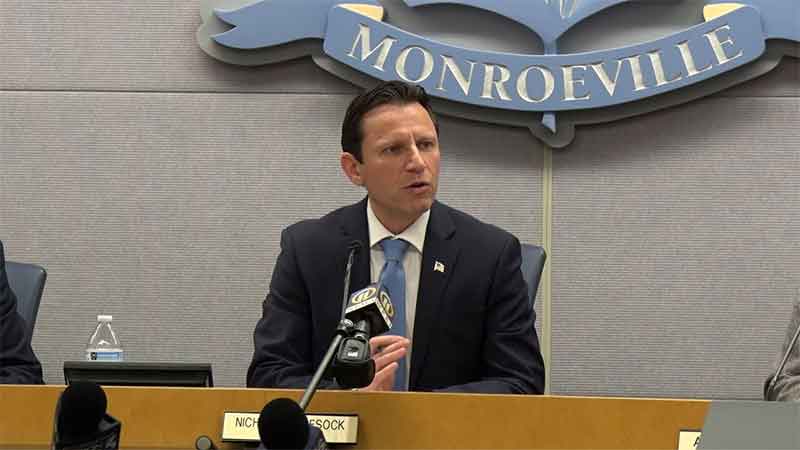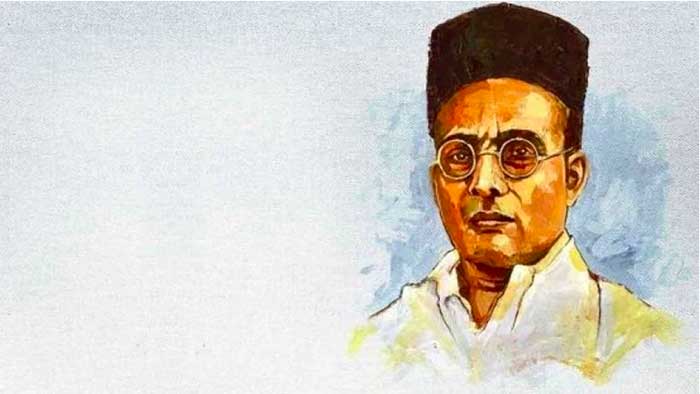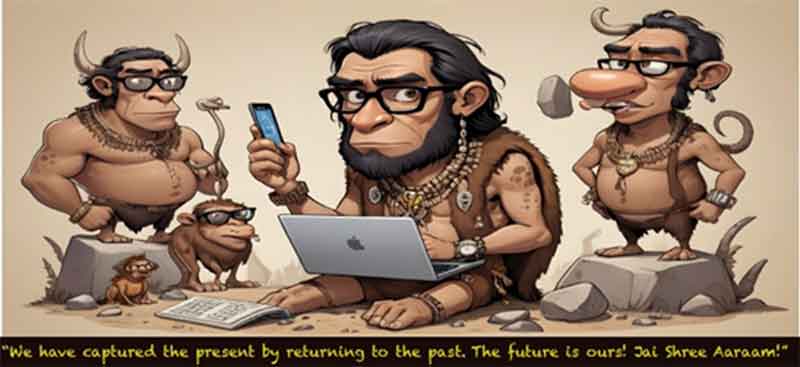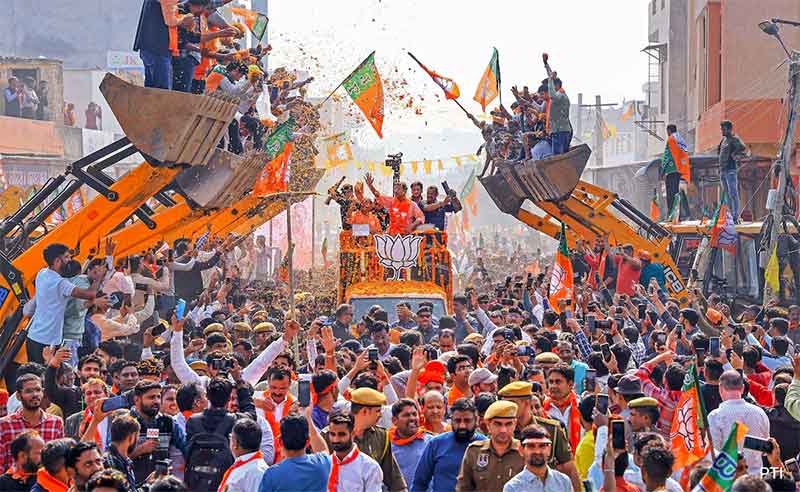by Dhruv Rana, Laabhesh Thapa and Sandeep Pandey
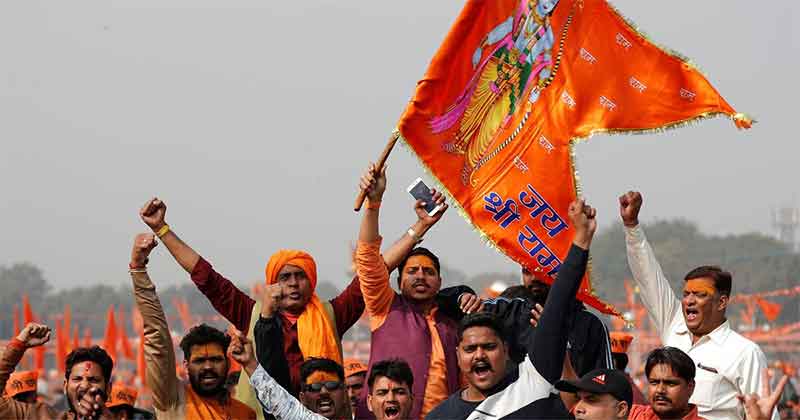
In India, we can observe how nationalism is a political ideology that holds devotion to one’s country as paramount to all other concerns. It was not until the late 18th century that nationalism became a widely acknowledged sentiment shaping public and private life and one of the great, if not the greatest, single determining factors of modern history, though people have always felt a solid connection to their native countries, their parents, and their governments. When the British ruled India, there was economic backwardness, repressive colonial policies, socio-religious reform movements and the influence of western education which led to the rise of nationalism. This spirit of nationalism shaped the anti-colonial movement under the leadership of mainly the Congress that forced the Britishers to quit India. Hindu-Muslim unity was an important plank of the movement inspired by nationalism.
Hinduism is a religion of the Indian subcontinent, which survived the onslaught of religions of various invaders, unlike some other parts of the world which converted en masse to a foreign religion. In contrast, Hindutva is an ideology working towards establishing the hegemony of the Hindus and Hinduism and has given rise to a new concept of nationalism conflating with majoritarian religious hegemony. Hindutva has also been present in the Nepalese monarchy. As aspirations for democratization grew around the close of the 20th century, the rulers aggressively embraced Hindutva to maintain public support and authority.
After the British Raj was overthrown in 1947, India adopted a new constitution inspired by the ideal of nationalism very thoughtfully cultivated by the Congress that created a secular republic with what has been called a “principled distance” rather than the strict church-state separation seen in many Western democracies. India decided to exhibit tolerance for the country’s many different religious sects without giving any one sect preferential treatment.
Both the ideas of Indian nationalism described above are dedicated to India’s sovereign geographical limits, but they disagree beyond that. Secular nationalism combines geographical integrity with the cultural concept of political pluralism. In contrast, Hindu nationalism combines territorial unity with Hindutva, or the view that India is primarily a state by, for, and of the Hindu population.
Hindu nationalism, as it is known now, may be dated to the 1920s, when Savarkar started to emphasize the significance of aligning India’s geographical and cultural/religious limits with the European nation-state. Savarkar saw Hindutva as a geographical, ethnic, and cultural community. Savarkar’s motto, “Hindu, Hindi, Hindustan,” mirrored European-style nationalism based on religious identification, common language and racial unity. His notion of Indian nationalism emphasized loyalty to the Hindu nation. The Hindu unity, divided by caste and civic character, was strengthened by the Rashtriya Swayamsevak Sangh (RSS). In 1925 RSS was formed by Keshav Baliram Hedgewar for the sole motive of uniting Hindu society (read promotion of Hindutva). BJP as the ruling party of India is currently pursuing this agenda. It has taken up religious issues like cows protection by banning selling and consuming beef, while directly targeting the Muslims and going to the extent of mob lynching any Muslim suspected of being involved in bovine trade or having consumed beef. Narendra Modi’s rise was accompanied by his hard stance against Muslims in Gujarat especially during the 2002 communal violence, building this brand of Hindu nationalism and projecting him as its most strident leader. This aggression was directed not merely against Muslims living in India but also against Pakistan. Even before taking over as PM, in 2002 Gujarat state assembly elections he was targeting President Musharraf in his election speeches and posters.
In 2019 as PM he undertook Balakot ‘surgical’ strike in response to killing of 40 Central Reserve Police Force personnel in Pulwama attack and secured the return of Indian pilot Abhinandan Varthaman who was captured by Pakistan in an air raid and bolstered his image as a strong Hindutva leader, evoking spirit of nationalism among Indians, which also helped him win the election soon after.
Even though it was a Supreme Court decision which paved the way for building a Ram temple in Ayodhya, after demolition of Babri mosque, which stood at the same place, by Hindutva activists described as a criminal act by the same SC judgement, Narendra Modi very shrewdly projected it as an achievement of his government thereby fulfilling a long held promise of his party, further consolidating his image as a Hindu nationalist leader. The political project of demolition of mosque and building a temple at its place has been given the colour of nationalist pride.
The politics of Hindutva nationalism may have helped BJP rise to power and maintain a grip over it but in the process has destroyed the values and spirit assiduously built over the freedom struggle which informed the making of the Constitution of India.
When a Bhartiya Janata Party Member of Parliament Ramesh Bidhuri can openly abuse a Muslim colleague Danish Ali in parliament we can imagine how insecure the minorities must be feeling under the present dispensation. Muslims and Christians have been particularly at the receiving end of a sustained obnoxious disparaging campaign by Hindutva activists, organizations and sometimes the BJP governments too. Bulldozer has become a symbol of this intimidation and is often selectively used against political opponents. A report released by India Hate Lab, Washington DC, has documented 668 cases of hate speech against religious minorities, 75% of which took place in BJP ruled states. In most cases no action was taken against the culprits. With a Uniform Civil Code of Uttarakhand Bill approved by the state Assembly, now India is a queer case where hate remains unpunished and love is punishable.
Talking about Nepal, few things ignite the nationalist fire more quickly than the perception or reality of an adversary from outside. Beyond matters of national sovereignty, Nepal’s national purity—the last bastion of what King Prithvi Narayan Shah had proudly referred to as “Asal Hindusthan” (the pure land of Hindus) —was at stake in the portrayal of British India as an invading, creeping bogeyman. As a consequence, the purity of national sovereignty was also upheld by keeping Nepal an untainted Hindu realm free of Muslim and British contamination.
Hindutva has also been present in the monarchy in more recent times. As aspirations for democratization grew around the close of the 20th century, the rulers aggressively embraced Hindutva to maintain public support and authority. Their deification as a direct reincarnation of the Hindu god Vishnu was possibly the most blatant example of this tactic. In direct contrast to secular India in the south, the monarchy aggressively began to promote Nepal as the last Hindu country in the world in the 1960s. They started fostering cultural relations with the Hindu right in India, often to the displeasure of the ruling authorities. Hindu nationalism had an unquestionable impact on the creation of Nepal’s final constitution in 2015. Even today’s de jure secularism in Nepal is under doubt. For secularism has been defined as the state supporting Sanatan faiths, or religions practiced since ancient times. Many activists and minority populations opposed the constitution’s language.
The recently ousted prime minister of Nepal, Khadga Prasad Oli, represented the growing influence of Hindutva politics in Nepal, when he controversially said that Lord Ram was born in Nepal rather than India in 2020. Hinduism is a holy religion in Nepal. It has had a revered history of giving comfort and purpose to millions of lives in Nepal for hundreds of years. It still has a strong presence in modern-day Nepali society. However, throughout Nepal’s history, tyrants and despots have used Hindu nationalism to achieve their political objectives. The core factor contributing to Nepal’s rising rate of religious conversion is discrimination based on caste. As a result, there has been a rise in Hindu religious activity, temple building, and public religious ritual organization.
Unlike in India, social justice movements founded on the concepts of Ambedkar and Periyar have not undermined the Hindu caste system in Nepal. The Asal Hindusthan narrative of Nepal is still being promoted by legislators and judges.For King Mahendra, the 11th King of Nepal, nationalism was one language, one nation, and one religion. The word “Hindu Kingdom” was added by King Mahendra to the constitution of Nepal, boosting the confidence of Hindus in India and across the globe.
Nepal should be at ease and confident that its identity as a nation with a Hindu majority would not be challenged, rather than being consumed with an unrealistic desire to be the only Hindu state in the world at the cost of religious minorities. The most prominent religion is “more equal” than others, notwithstanding secularism. The President closely attends important Hindu celebrations, and extra holidays are observed on Hindu festivals in addition to limitations on cow slaughter and religious conversion.
Hence, both in India and Nepal the Hindtuva ideology has become or remained a challenge to the concept of an egalitarian society based on the principles of secularism and socialism.
The secular societies of India and Nepal stand in contrast to United Arab Emirates which has recently built a Hindu temple near Abu Dhabi, thereby conveying a message of communal harmony, which seems to have become an anathema in South Asia.
Dhruv Rana, Laabhesh Thapa and Sandeep Pandey– Dhruv Rana is a 3rd year LLB student at NALSAR, Hyderabad, Laavesh Thapa teaches law in Nepal and Sandeep Pandey is General Secretary of Socialist Party (India).
e-mail id: [email protected], [email protected], [email protected]



